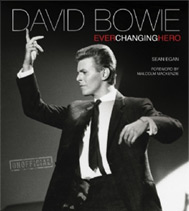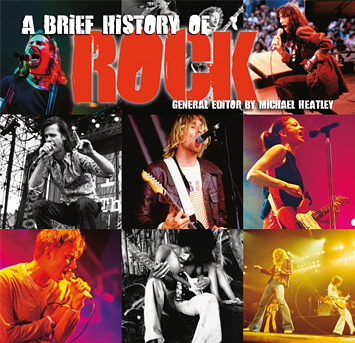(Various instruments, vocals, b. 1958) Originally recording as Tubeway Army – the name used on his first No. 1 single ‘Are “Friends” Electric ?’ – Numan’s electronic music was influenced by Berlin-era Bowie and set in a dystopian future of his own imagining. The hypnotic synthesizers and emotionless vocals earned him a second 1979 chart topper ‘Cars’, which was ...
Blues and hard-rock guitarist Gary Moore was born in Belfast, Northern Ireland in 1952. He began playing the acoustic guitar at the age of eight, acquiring his first electric model at 14. Moore learned to play right-handed, despite being naturally left-handed. In 1969, he joined Skid Row, an Irish blues-rock group that featured Phil Lynott on ...
(Guitar, harmonica, banjo, vocals, 1896–1972) Gary D. Davis was born in Laurens, South Carolina and was completely blind by the age of 30. He taught himself harmonica, banjo and guitar and played in string bands throughout the teens, going on to work the Carolinas as a street singer in the 1920s. Ordained as a ...
(Vibraphone, b. 1943) Gary Burton is one of the most impressive vibists in jazz, at times using four mallets in order to harmonize with himself. He began his career in country music with guitarist Hank Garland, played jazz with George Shearing and Stan Getz, and then helped to instigate the jazz-rock fusion movement through his group with ...
(Vocals, piano, guitar, 1945–2003) Kentucky-born Stewart first recorded in 1964, and was a member of rock band The Amps. He co-wrote Stonewall Jackson’s 1965 country hit, ‘Poor Red Georgia Dirt’, and several for Billy Walker and others before signing to RCA in 1973. His first country hit was a cover of The Allman Brothers Band’s ‘Ramblin’ ...
(Vocals, b. 1939) This former church chorister from Virginia reached global Top 20s in 1961 with call-and-response ‘New Orleans’. While its ‘Not Me’ follow-up flopped, ‘Quarter To Three’ topped the US chart. Further US-only hits included 1962’s ‘Seven Day Weekend’, his last before the patronage of Bruce Springsteen facilitated a commercial revival in the early 1980s, both home ...
‘Mad World’, 2003 Gary Jules had recorded as a solo artist since 1998, but in 2001 he collaborated with Michael Andrews to cover Tears For Fears’ ‘Mad World’. The sombre remake was featured in 2003’s hit film Donnie Darko, and the appeal of the film, coupled with the song’s popularity and Jules’ strange choice of cover, made ...
(Guitar, singer-songwriter, b. 1949) Singer, guitarist and hirsute oddball Nugent was an unlikely axe hero, his outlandish stage act captured on 1978’s platinum-selling Double Live Gonzo! He served his apprenticeship in Chicago’s psychedelic Amboy Dukes before going solo in 1976, his biggest hit coming the following year with the riff-heavy ‘Cat Scratch Fever’. An avid ...
(Vocal/instrumental group, 1978–84) A synth-pop ‘side project’ which featured members of other electronica and post-punk bands, including Midge Ure, Billy Currie of Ultravox, Gary Numan’s entourage, and Barry Adamson (bass) and John McKeogh (guitar) of Magazine. Steve Strange, a key new romantic catalyst, sang. Several evocative, ground-breaking hits followed, including ‘Fade To ...
Electro is currently enjoying a huge renaissance, but, despite the current hype and mainstream acceptance of the music, it has always enjoyed a strong cult following. This is due to the music’s many different strands and its constant need for reinvention. At its most basic level, electro differentiates itself from house and techno by the fact that ...
Born out of a reaction to both punk and 2-Tone’s politics and anti-star stance, the British synth-pop wave of the early 1980s brought almost instant change to the UK pop scene. Moreover, the US success of the principal protagonists signalled the biggest ‘British Invasion’ since The Beatles and The Rolling Stones transformed American pop in the 1960s. Mixing a ...
David Bowie has inspired more musicians than most recording artists, but he naturally also had his own formative influences. Who Does He Love ? It almost goes without saying that Elvis Presley was important to him: few of the musicians who became teenagers in the Sixties weren’t overwhelmed by The King’s stunning larynx and greaseball beauty. Perhaps revealingly, Bowie ...
This was a decade when the impact of dance culture on rock and vice versa sometimes led to exciting results: it opened with ‘Thriller’ and closed with the Madchester scene of Happy Mondays. Punk had subsided to become the less threatening new wave movement, which, along with the new romantics, dominated the early days of the decade. As ...
When Vassar Clements formed a band called Hillbilly Jazz in 1975, Bill Monroe’s former fiddler pulled the cover off the hidden connection between country music and jazz. The two genres had more in common than most people thought. After all, Jimmie Rodgers recorded with Louis Armstrong early in their careers; jazz legend Charlie Christian debuted on Bob Wills’ radio ...
Almost no Texan musicians have ever herded cattle, but most like to think of themselves as cowboys nonetheless. They imagine themselves pulling out an acoustic guitar after dinner and singing a song about the adventures and frustrations they have known. And not just any old song – it has to be one they wrote and it has to be more ...
AUTHORITATIVE
An extensive music information resource, bringing together the talents and expertise of a wide range of editors and musicologists, including Stanley Sadie, Charles Wilson, Paul Du Noyer, Tony Byworth, Bob Allen, Howard Mandel, Cliff Douse, William Schafer, John Wilson...
CURATED
Classical, Rock, Blues, Jazz, Country and more. Flame Tree has been making encyclopaedias and guides about music for over 20 years. Now Flame Tree Pro brings together a huge canon of carefully curated information on genres, styles, artists and instruments. It's a perfect tool for study, and entertaining too, a great companion to our music books.

David Bowie
Fantastic new, unofficial biography covers
his life, music, art and movies, with a
sweep of incredible photographs.


